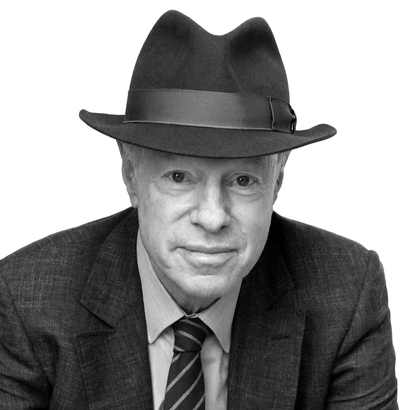In his memoir, The Romanian, winner of the 2004 Prix de Flore under the title Autobiographie Érotique, the American writer Bruce Benderson recounts his obsession with a scrappy young Romanian male prostitute. His infatuation leads him to immerse himself in work by another Romanian, the sculptor Constantin Brancusi. Benderson focuses on The Kiss, first created in 1907–8 and depicting “an embracing couple as a single block of stone, fused eternally in hermetic union.”
To visit the weather-beaten marble in its original installation—atop the tombstone for which it was made, in Montparnasse Cemetery—is a rewarding pilgrimage. (Go there if you can; it is open to the public.) But seeing any of its six versions is to feel its power. “Brancusi’s fantasies of union in stone seem pre-oedipal and infantile,” Benderson continues, “attempts to reproduce the undifferentiated bliss of the child and the breast. Eyes, ears and noses have all but disappeared, buried in their closeness or perhaps not even yet born from stone. The moment of the kiss is eternal, like suspension in the womb. So static has the moment become that it represents what we all must miss—security, pleasure.”

The primordial force and emotional impact of this sculptor’s remarkable work can now be experienced at the Centre Pompidou, in Paris, which opens its vast Brancusi retrospective on March 27. With nearly 200 sculptures—as well as photographs, drawings, and films by the artist—the exhibition provides an unprecedented opportunity to study Brancusi in bronze, wood, marble, and stone. There has been no equivalent event since the large solo exhibition, also at the Pompidou, in 1995.
Born in 1876, in humble circumstances in rural Romania, Brancusi made his way to Paris in 1904, where he befriended Modigliani, Duchamp, and Léger. Ezra Pound, Mina Loy, and William Butler Yeats visited his studio and wrote about him; his work was admired by fans of the avant-garde from all over the world.
Brancusi’s studio, bequeathed to the French state upon his death, in 1957, has long been one of Paris’s great attractions, but normally only a small amount of his art is actually on view. To stand before his work, with its fascinating ambiguity, can be profoundly moving. Bird in Space (1923), the first art object ever to be the subject of a case heard before the U.S. Supreme Court—the legality of its importation, free of charge for works of art, was challenged with the claim that, because it resembled a propeller blade, it was in fact a machine part—is naturally part of the Pompidou exhibition.

Ariane Coulondre, the show’s curator, conceived of this magnum opus with a personal passion that is rare in the museum world. “Brancusi’s work is for me a source of renewed emotion and questioning,” she told me. “This emotion is both dazzling and destabilizing. The obviousness with which his pure, seemingly ‘simple’ forms are presented conceals multiple meanings and a taste for perpetual metamorphosis that never ceases to amaze me.” Quoting the artist’s comment “I am giving you pure joy,” Coulondre fulfills his mission by displaying the work on “very flat bases, as low as possible.” The intimacy, as the French would say, is palpitant—thrilling.
Brancusi’s sublimely simple and tender Golden Bird and his provocative 1919 photograph of it shimmering in brilliant light were shown to the American public in 1929. Edward M. M. Warburg, Lincoln Kirstein, and John Walker, three courageous patrons of modern art, which the public did not yet understand, displayed them in Cambridge, Massachusetts, in the two-room gallery of their fledgling Harvard Society for Contemporary Art. One local newspaper referred to the sculpture and its title as “an indeterminate brass shape which might have been called anything else just as well”; another important magazine described it as a “misshapened vase.” That was almost 100 years ago. Brancusi is now recognized as one of the most original and enthralling artists of the last century.
“Brancusi” opens at the Centre Pompidou, in Paris, on March 27
Nicholas Fox Weber is the executive director of the Josef & Anni Albers Foundation and the author of several books, including Le Corbusier: A Life and Patron Saints: Five Rebels Who Opened America to a New Art, 1928–1943


